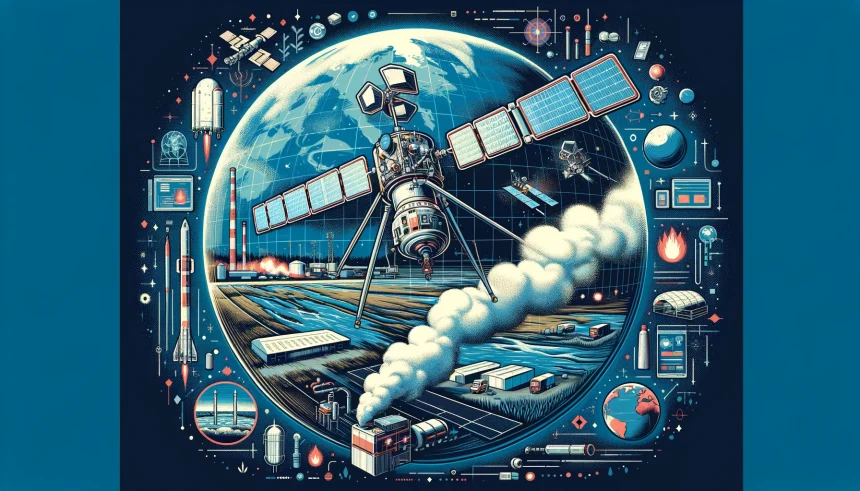Methane, a strong greenhouse gas with a considerable global warming potential but is less common than carbon dioxide, is receiving more attention in the fight against climate change. Methane has the capacity to trap enormous amounts of heat in the atmosphere, making it imperative to monitor and reduce emissions. This urgency has driven environmental organizations and space agencies to take on an ambitious project: tracking methane concentrations from orbit.
The Significance of Methane Mapping
Both natural and man-made events, such as the decomposition of organic matter in wetlands and the byproducts of the energy industry, contribute significantly to the atmospheric build-up of methane. Agriculture also plays a major role in this process via the raising of animals. The balance has been skewed by human-caused sources, increasing atmospheric methane concentrations and, therefore, their warming impacts. The careful mapping and measuring of these emissions is critical since it forms the basis of policies intended to reduce the climatic impact of methane.
The Pioneer of Satellite Projects
Sophisticated satellite missions have been launched in an effort to track down methane emissions worldwide. These missions are outfitted with state-of-the-art sensors that can detect methane with an astounding degree of accuracy. These heavenly guardians use spectroscopy, a method that analyzes the light spectrum to identify the distinct fingerprints of methane, which enables researchers to measure amounts and identify sources with previously unheard-of precision.
Methane Detection Pioneers
- Sentinel-5P Copernicus: Sentinel-5P is equipped with the Tropospheric Monitoring Instrument (TROPOMI), which is a gem in the ESA’s Copernicus program and can detect a wide range of atmospheric substances, including methane. Its daily worldwide sweeps provide a dynamic image of the ebb and flow of methane throughout the year, as well as a thorough description of its seasonal variations.
- The Environmental Defense Fund’s MethaneSAT: Methane mapping is about to undergo a revolution thanks to the impending MethaneSAT mission, which has its sights set firmly on the oil and gas industry. Its ultra-precision devices are designed to detect even the most minute pollutants, paving the way for focused and efficient mitigation approaches.
Handling the Obstacles Ahead
There are several obstacles in the way of a thorough mapping of methane emissions, from separating natural from artificial sources to managing the temporal and geographical variability of emissions. Furthermore, the transition from unprocessed satellite data to useful insights necessitates the combination of advanced analytics and teamwork among scientists, decision-makers, and business stakeholders.
The Methane Mapping Horizon
The field of methane monitoring is poised for innovation in the future since planned missions will make use of developments in analytics and satellite technology to provide even more precise information and frequent updates. By combining these space observations with data from Earth and forecast models, we may be able to get a better understanding of the global dance of methane and develop more resilient and successful climate plans.
In Concluding
One of the keystones of the international response to climate change is the project to map methane from space. Space-based mapping projects play a critical role in developing knowledgeable, practical strategies for methane reduction by providing scientists and policymakers with accurate and timely data on methane emissions. The importance of space in comprehending and preserving our planet is only increasing as we stand on the brink of technical and cooperative breakthroughs in climate research, offering up new paths for preserving Earth’s climatic destiny.








